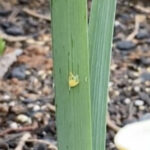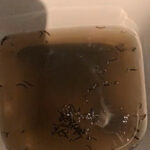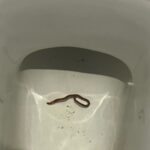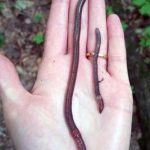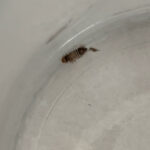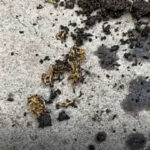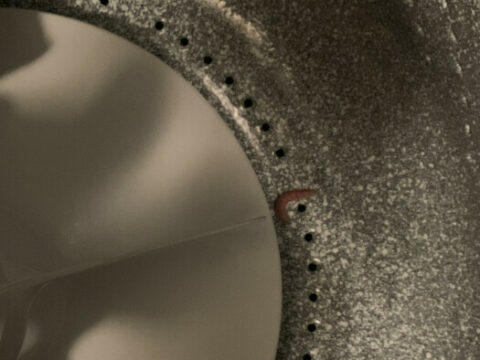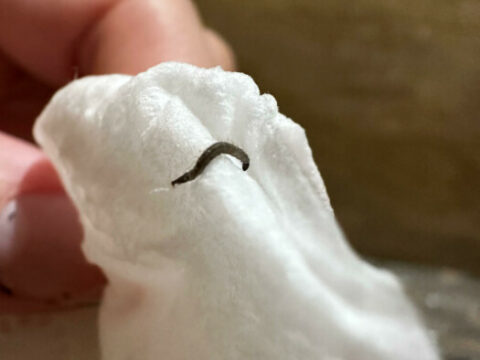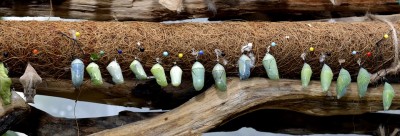
We get a lot of inquiries from readers wanting identification of (not-so) creepy crawlies, and we do our best to answer these. To do this we use information such as the geographic location in which the animal was found, what food sources are readily available to the animal, whether it was found indoors or outdoors, and what it looks like. However, much of the time we are offering our very best educated guesses, because so many larva and caterpillars look alike. This is not surprising, as current estimates state that there are between 2 million and 30 million species of insect and approximately 75% of those go through a larval stage. This means that there are between 1.5 million and 22.5 million different caterpillars and larvae out there. So, some of these are bound to look alike. Identification is further complicated by the fact that many larva go through several instars (or phases), and a single animal may look quite different over time.
Given these facts, it is not surprising that larva identification remains a tricky proposition at best, and the most effective method of species identification for those of us without access to DNA analysis is to let the larva grow up and the see what type of insect it becomes.
The pupa of various species raised in captivity.We know that some of our readers are interested in finding out just what type of crawly friend is sharing their world, so we’ve put together a short list of reputable sources that can help our readers to do just that. In no particular order, they are:
- Raising Butterflies, which describes itself as
an encyclopedia of knowledge designed both to help beginners understand the basics and to encourage seasoned veterans to collaborate the specifics of raising butterflies from Western North America and beyond.
This page offers tips and techniques to help with everything from identifying the correct food source for your larva or caterpillar to how to care for the moth or butterfly once it has grown up.
- The butterfly school is a website designed specifically for teachers who wish to raise caterpillars with their classes. It focuses less on identifying the species of the adult specimens than it does on simply keeping the critters alive. This is a great place for beginners who can then begin to branch out once they have the basic technique down.
- The Amateur Entomologists’ Society is a UK organization for, well, amateur entomologists. This is a great source for all sorts of information and opportunities for UK readers. They have detailed information on rearing many different insects.
Any of these sites will give provide you with a good head start to rearing the insects you find around your house. We would love to see pictures of your set up and hear about your results. And we’re always here to help you determine just what type of insect friend you’ve raised.
All About Worms is always free, always reader-supported. Your tips via CashApp, Venmo, or Paypal are appreciated! Receipts will come from ISIPP Publishing.
You might also find these guys interesting!






